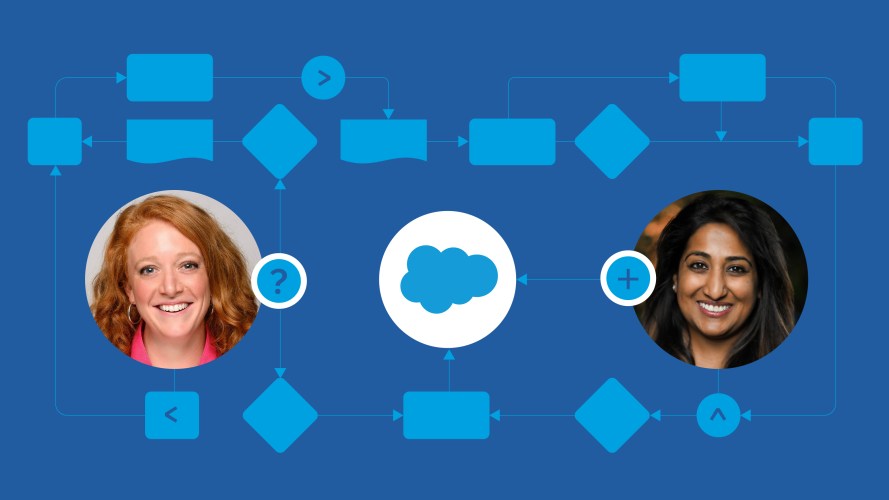How To Tell if Your Customers Are About To Leave You



At Salesforce, our customer success experts have witnessed nearly every possible customer scenario play out. Here are our best practices.

John Durocher
Keeping customers happy is a pursuit that goes back as far as business itself. As business landscapes change, the challenges companies face to keep customers engaged and happy change too. Failing to notice signs that your customers aren’t getting what they want can cause formerly loyal customers to inch toward the door. And even worse – into the arms of a competitor.
Winning the trust of existing customers and the loyalty of new ones by continually delivering value is worth its weight in gold. That trust creates a direct path from new customers to repeats and renewals, and ultimately to long-term success and sustainability.
At Salesforce, our customer success experts have witnessed nearly every possible customer scenario play out. As trusted advisors to our customers, providing strategic advice and product expertise, they have been there through the good, bad, and the ugly. I personally have worked with hundreds of customers, including leading strategic interventions for our most at-risk accounts.
For Salesforce Customer Success, the process of pinpointing at-risk customers includes both quantitative and qualitative indicators. Our best practices boil down to three major steps:
- Use data to pinpoint at-risk customers
- Assess the attributes of a happy, successful customer
- Find and fix potential pain points
How Salesforce works at keeping customers happy
Use data to pinpoint at-risk customers
Let’s start with the quantitative: our data signals. We have a data signaling system that allows us to determine where a customer may be struggling. It measures areas like licenses, usage, account maturity, and support cases, and aggregates them into a customer “health” overview. This identifies customers with stale implementations and helps us see, in objective measures, how at-risk any one customer is.
Of course, looking at the data alone is not enough. On my team, we like to say we’re “data-informed,” not solely data-driven. Data-informed means we start with data signals, but add qualitative assessments to avoid the pitfalls of looking at data alone. Missed learnings in field or grassroots situations, and lost critical data points, are bad enough. Even the time it takes to wait for data to accumulate before you can analyze may be too late in the game.
Assess the attributes of a happy, successful customer
Next, our qualitative indicators come in. By marrying data and the human elements of your relationship, you can determine the proper course of action and save your customer, or partner together on new opportunities.
At Salesforce, we use six “Critical Success Factors,” the ingredients to successfully delivering value for every customer:
- Partner, not vendor: Is Salesforce engaged with the customer as a critical, strategic business partner?
- Executive relationships: Does Salesforce have strong relationships with the customer’s leadership team?
- Business value: Are Salesforce and the customer driving quantified outcomes and business value together?
- Required resources: Does the customer have the required resources and skills in place to drive product implementation and adoption?
- Technical debt: Is there a defined path for overcoming technical debt obstacles?
- Right product, right capabilities: Is the customer leveraging the right products and/or services to achieve their objectives?
Our success experts conduct an assessment of each factor in tandem with our data signals to identify issues that might put a customer’s account health at risk, as well as spot areas of growth and improvement. Data storytelling helps us get ahead of any potential grievances – and identify new business opportunities.
Find and fix potential pain points
Tying this all together is our proactive engagement approach. By running audits of our large customer accounts, with data signals as our guiding light, we can get ahead of potential issues. Before a customer can glance twice at the door, we identify current or potential pain points and areas of opportunity.
Also key to this approach: a regular cadence for reviewing the data signals and success factors. We have thousands of employees focused on customer success, and a centralized governance model for how often and which customers to engage keeps it running smoothly.
This simple formula, when done correctly, provides you with a picture of the overall health of a customer. Think of it as similar to a doctor’s basic evaluations — doing a pulse check and taking your blood pressure. While the human body is so much more complex than those things alone, they give you a rough indication of a broader problem. The same goes for evaluating your customer relationship.
How-to: Your path to keeping customers happy
In any industry, and at any size, companies can blend data and feedback to develop a personalized approach to keeping customers happy. All it takes is a little customization.
First, identify what your data signals are. They should be proactive, quantifiable indicators of your success factors. Outline why your customers come back to your business, and identify what that looks like in numbers. For example, if you’re in customer service, you can look into how average case handle times differ between customers. Your data signals will vary depending on the service or product your company is offering, and your customer’s intention of doing business with you. Be sure to also identify the thresholds for your signals so you can group (unhealthy, not so healthy, healthy). Then, define what action you will take for each segment.
Next, identify your qualitative success factors. There could be six, or 10, or just two. Think about what defines a happy and healthy relationship between your business, your customers, and their ultimate goals with your product or service. Lay out a method for collecting the success factors — your initial research could be guided by customer surveys, testimonials, or a listening tour.
Last, establish a process and cadence for auditing your customers. Set up a governance plan and a team to review the data signals and success factors and connect with customer account teams. Doing so regularly and proactively will ensure you notice problems and opportunities before they arise – not after a customer is ready to leave. You should be conscious of continuously updating your data signals and success factors. Changes in your team’s leadership, market shifts, and mergers are just a few scenarios that could trigger the need to revisit things and update.
Your business will change. And as it changes, your data signals and success factors may need to shift. So don’t stop making improvements. Internal committees can help deliver a consistent feedback loop on what defines a happy customer. With this process in place, you can avoid attrition, and more importantly, ensure that you are keeping customers happy and getting value.
Are you on the right success plan for your business?
Salesforce Success Plans provide the right level of expert guidance and support to every customer’s needs. Learn how you can grow your business with Salesforce.


























